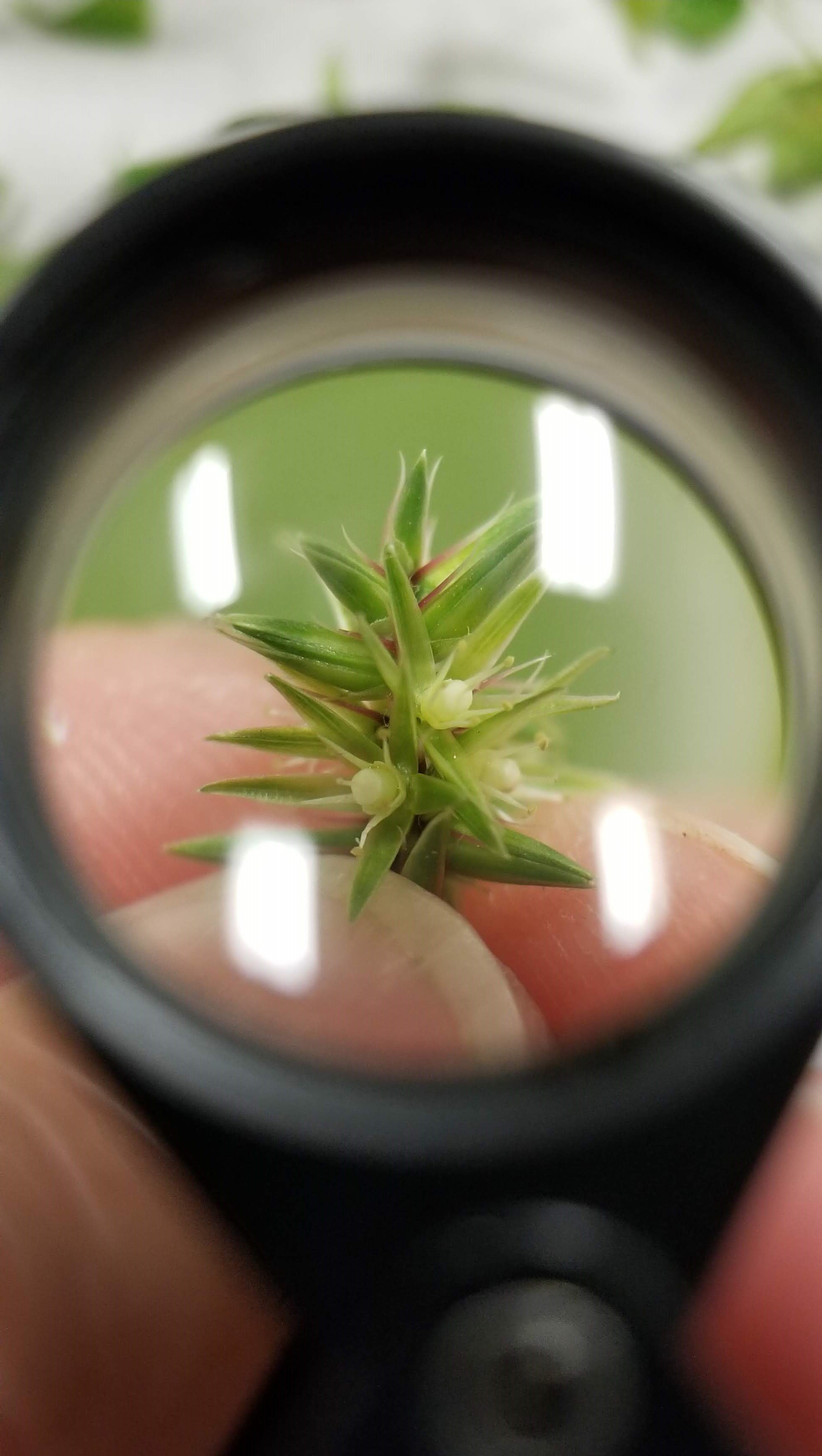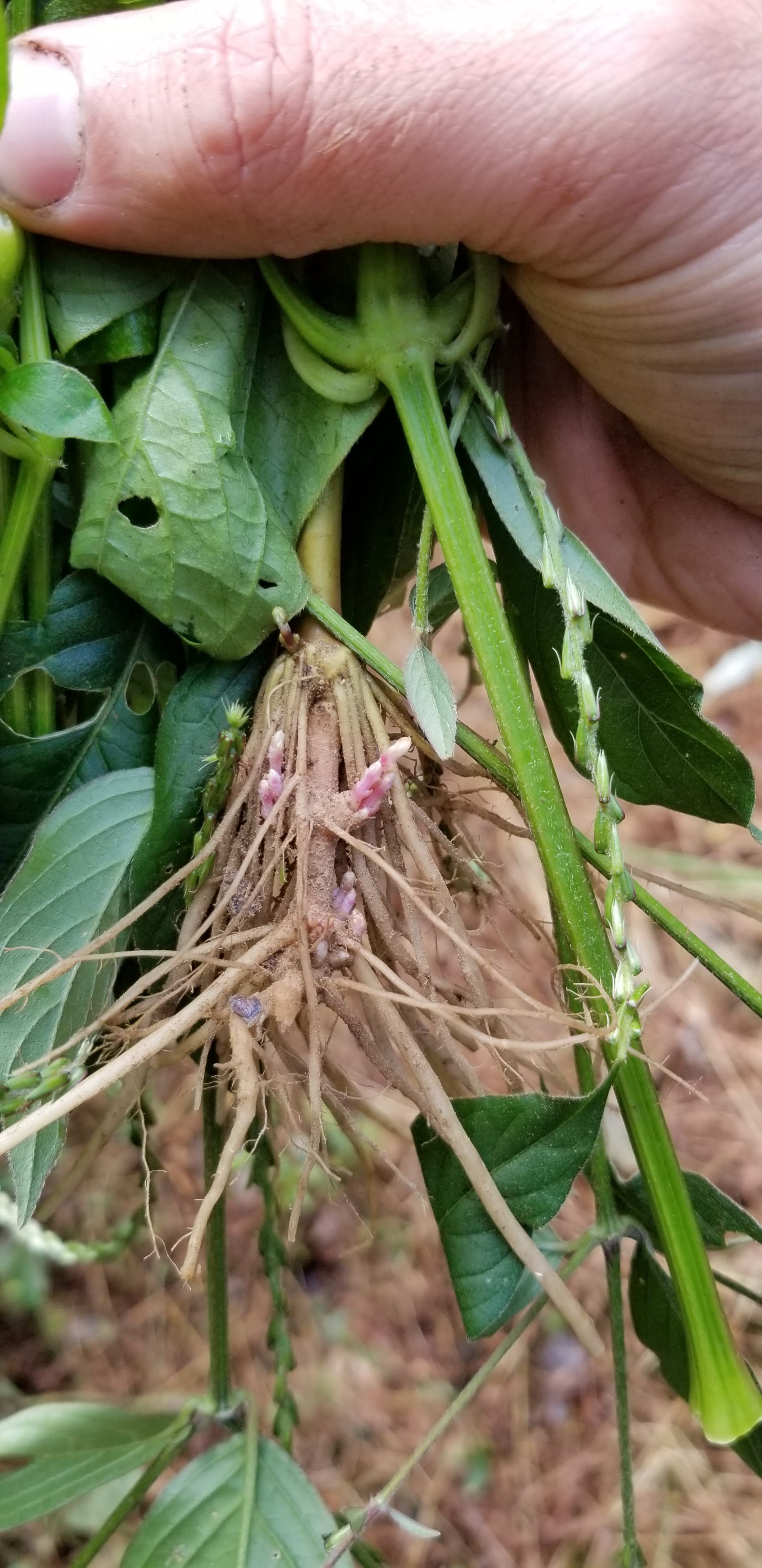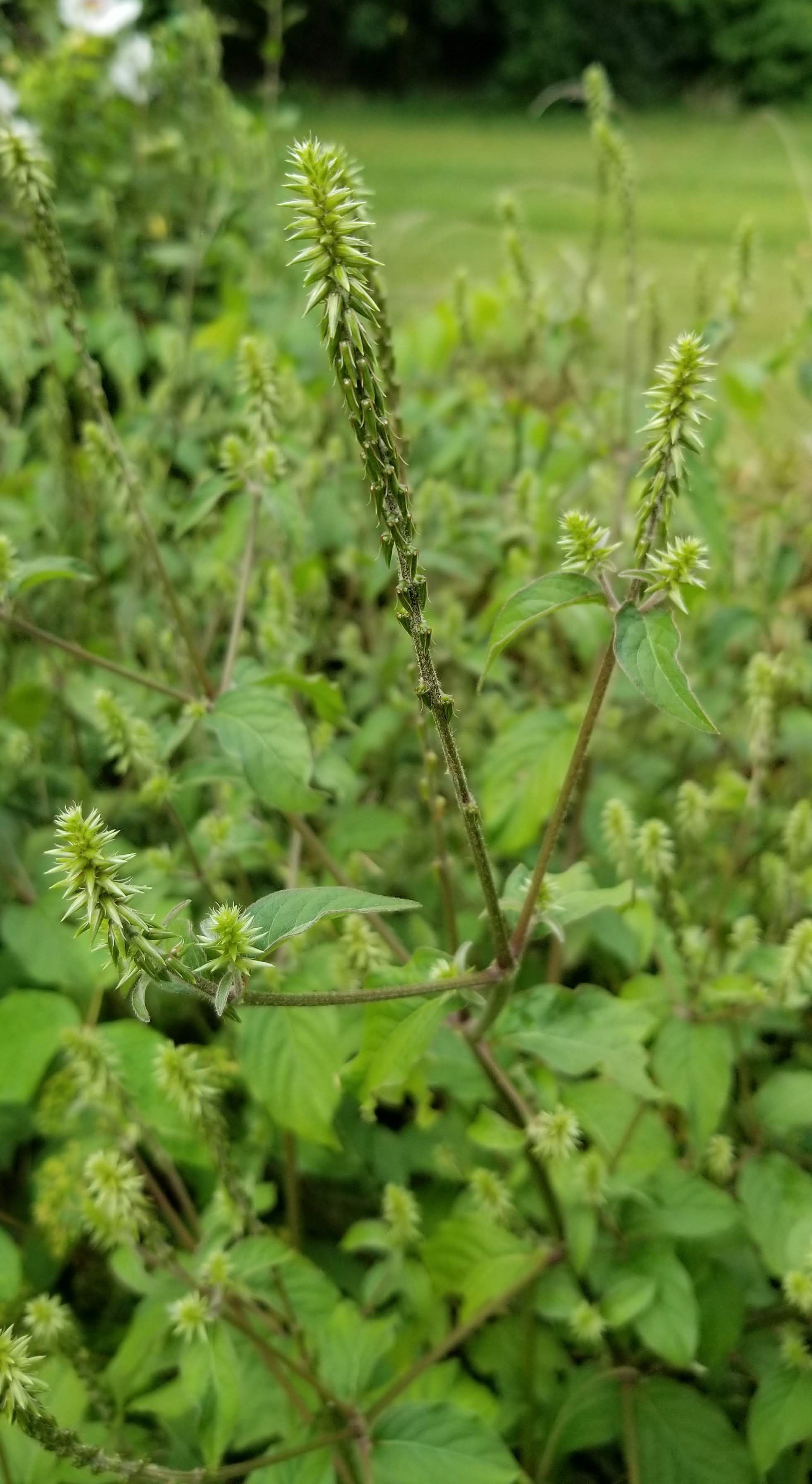August 2022 Invasive Plant of the Month
SICIM Email
Japanese Chaff Flower (Achyranthes japonica)
Japanese Chaff Flower (Achyranthes japonica [Miq.] Nakai) is an herbaceous perennial plant that invades wood edges, field edges, old fields, pasturelands, ditches, and riparian and wetland areas. Japanese Chaff Flower (hereafter JCF) can be identified right now by its shrubby growth habit and bottlebrush-like flowering spikes/seedheads. A native of eastern Asia (specifically Korea, China, and Japan), this species was mostly like introduced to North America accidentally and was first spotted in Kentucky in 1981. Now, JCF has been reported in 17 Indiana counties, including all 13 counties along the Ohio River as well as Knox, Gibson, Dubois, and Lawrence Counties.
IDENTIFICATION & BIOLOGY: JCF is an herbaceous perennial plant in the Amaranthaceae family (aka Amaranth family) that reproduces prolifically via small fruits with stiff bracts. JCF has opposite, elliptical leaves with an arching venation pattern (like dogwood or Cornus spp. leaves). Its stems are ribbed with swollen nodes that tend to be reddish in color and can grow up to a height of 3 to 6 ft. In late summer (early August), the tips of the stems will start developing short, dense spikes of inconspicuous flowers that lack petals, which are reminiscent of bottlebrushes. As the fruits develop, the spikes elongate, and the fruits lie flat on the stem. The fruits mature in mid to late August and can be easily spread by clinging to the fur and feathers of mammals and birds as well as clothing. In addition, there is probably some spread by mowing and agricultural machinery as well as via waterways.

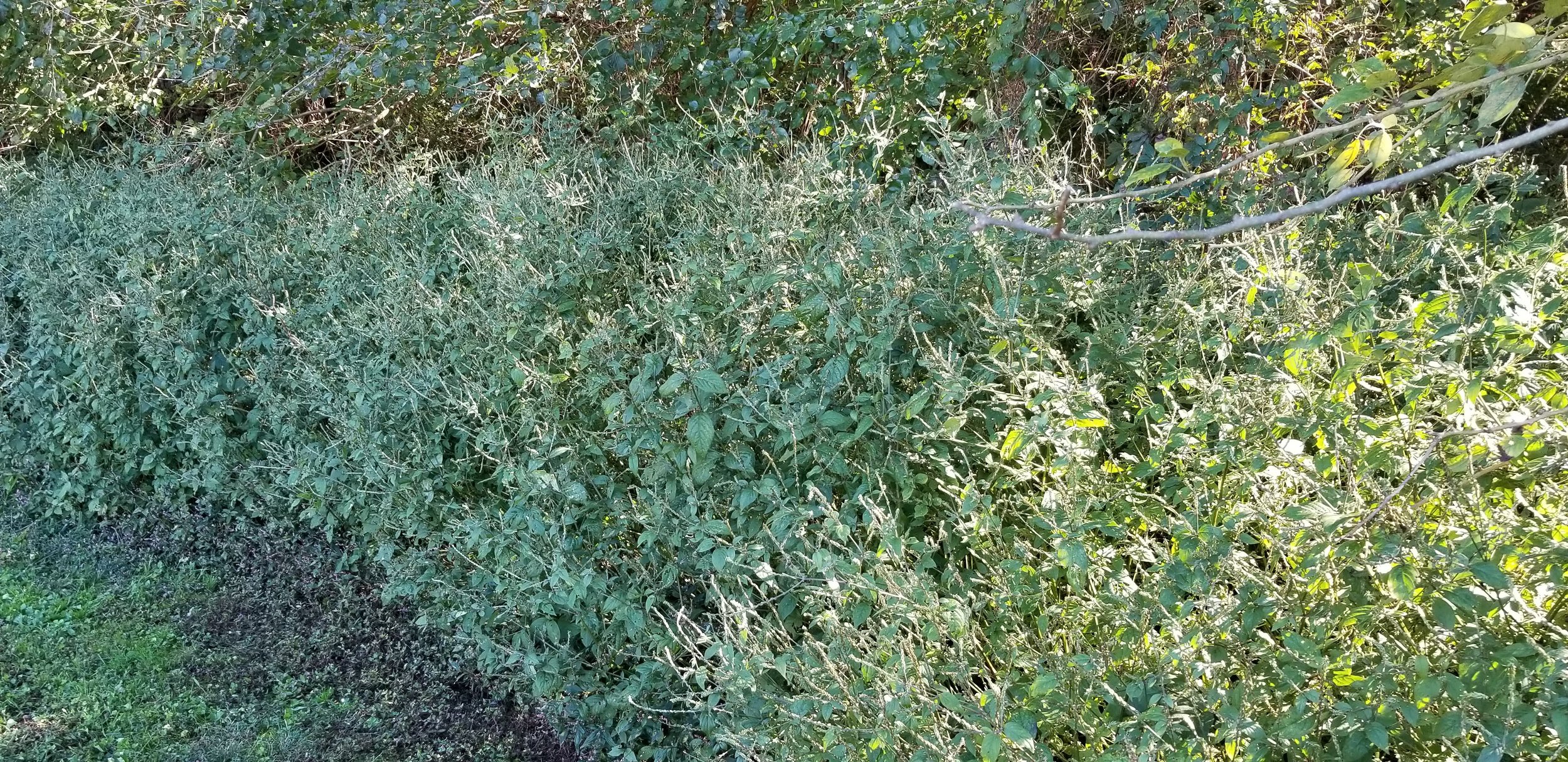
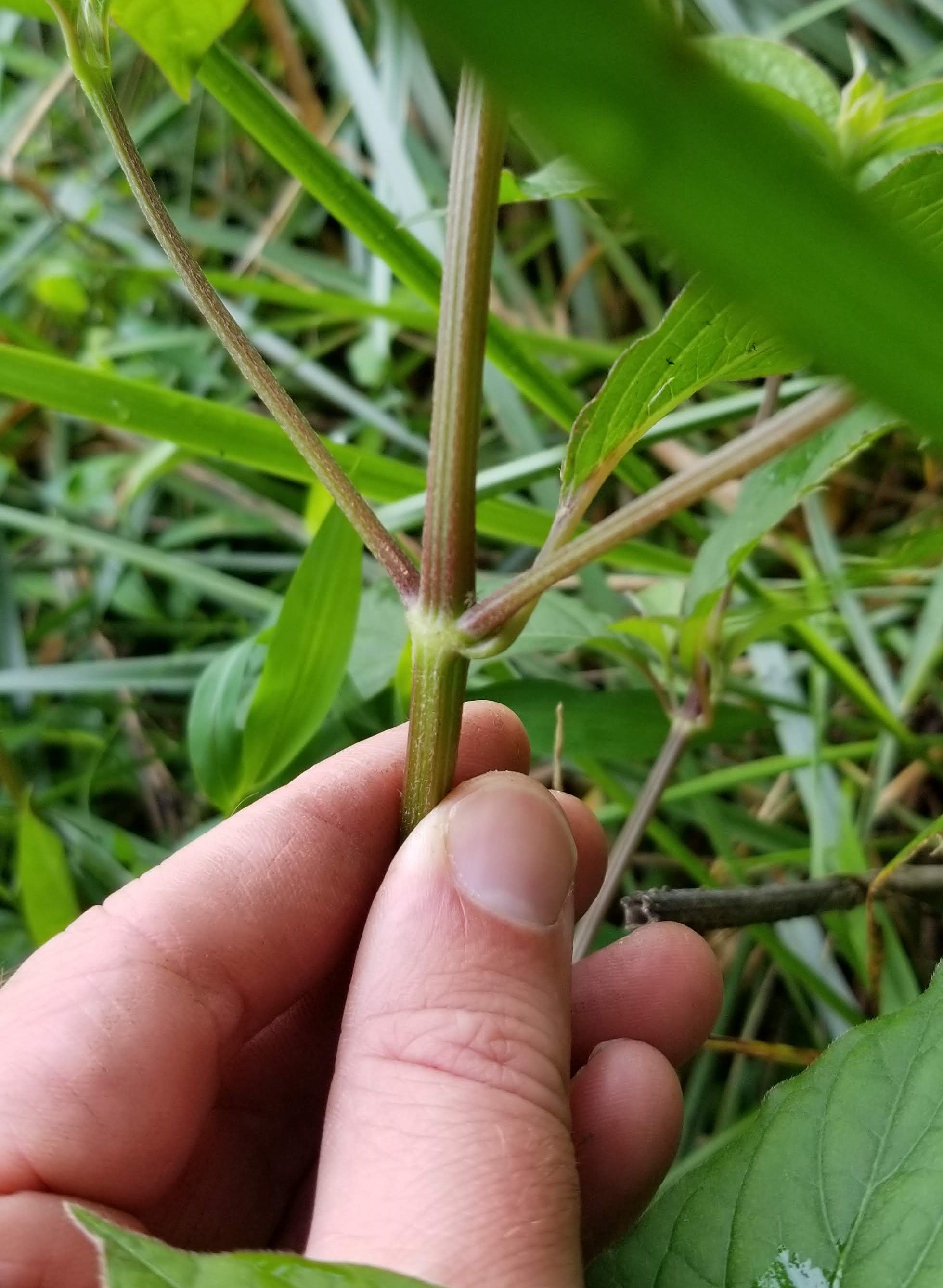

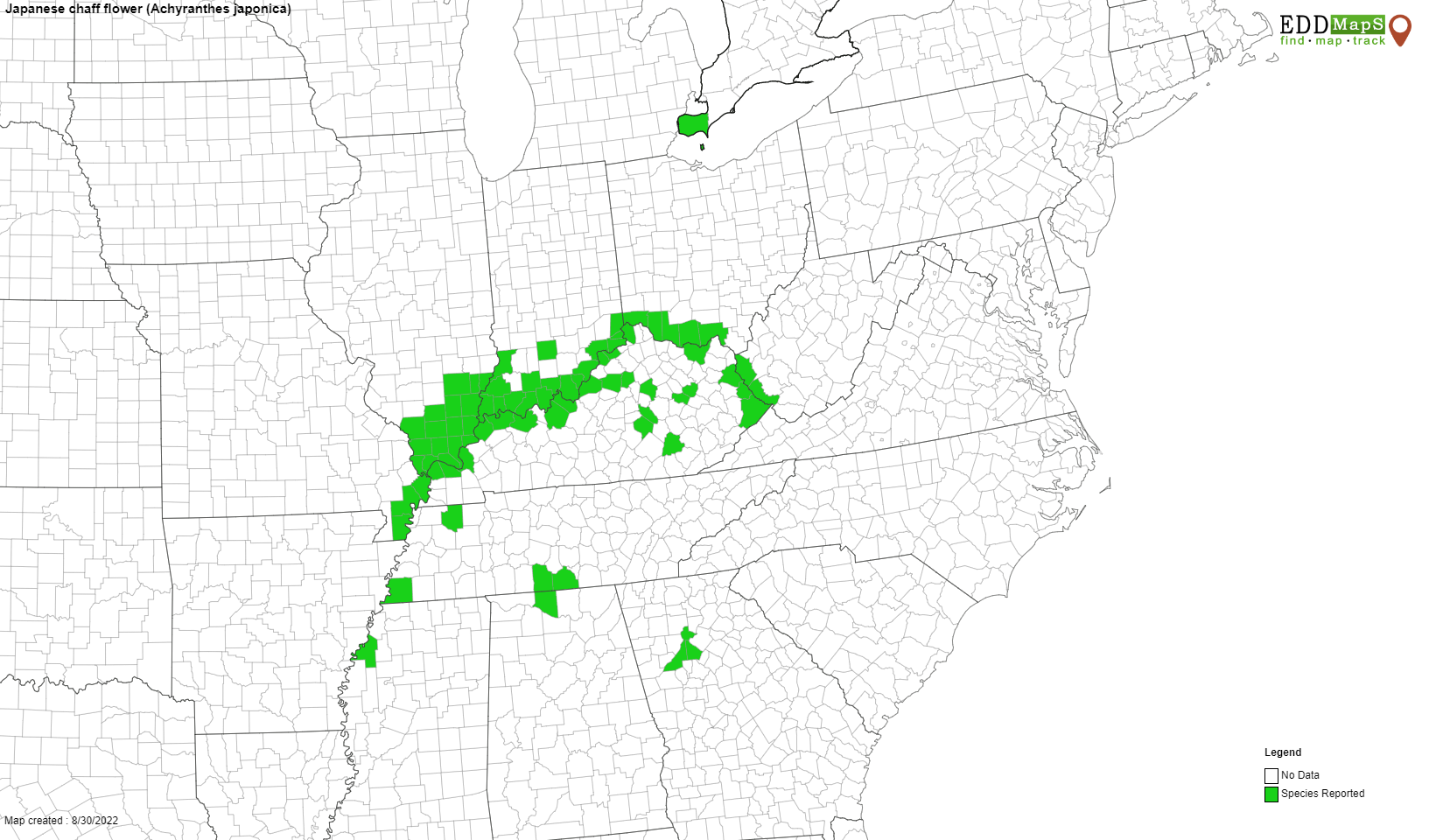
LOOK-A-LIKES: There are a couple native look-a-likes to JCF. Before JCF flowers, it can resemble dogwood (Cornus spp.) seedlings but can be differentiated by its herbaceous, ribbed stems with swollen nodes as well as its leaves lack the “vein threads” (caused from sticky, stretchy vascular bundles) found in dogwoods. The fruiting spikes of JCF resemble the spikes of American Lopseed (Phryma leptostachya). American Lopseed can be distinguished by its smaller growth form (normally only 1-2 ft. tall) and its leaves are toothed. Lastly, there is a native perennial amaranth that can look very similar to JCF, and that is Eastern Bloodleaf (Iresine rhizomatosa), which is a state rare plant. The best way to tell JCF and Eastern Bloodleaf apart is when they are in flower/fruit. Eastern Bloodleaf lacks the bottlebrush-like flowering spikes and instead has small, whitish-silvery flowers in spike-like terminal inflorescences, more reminiscent of other Amaranth spp. In addition, the fruits of Eastern Bloodleaf are small with cottony hairs.
HABITAT & DISTRIBUTION: JCF prefers part shade and moist to mesic soil conditions. However, it can grow in sunnier and drier conditions as well as shadier ones. It can be found along wood edges, field edges, old fields, pasturelands, ditches, and riparian and wetland areas. JCF has been reported in 17 Indiana counties, including all 13 counties along the Ohio River as well as Knox, Gibson, Dubois, and Lawrence Counties. In addition, JCF has been found in Illinois, Missouri, Kentucky, Ohio, West Virginia, Tennessee, Georgia, Alabama, Mississippi, and even Ontario.
ECOLOGICAL THREAT: JCF produces lots of seeds (anywhere from 100 to 1,000+) per mature plant, and these seeds have a high germination rate of 95%. JCF’s seeds cling easily to fur, feathers and clothing; in addition, the seeds seem to spread along waterways, allowing JCF to spread far and wide quickly. Besides seed production, JCF is potentially rhizomatous, which would allow it to spread vegetatively as well. (JCF definitely does produce new shoots from the crowns, which can lead to shrubbier habits after mowing.) JCF also increases growth with the addition of nitrogen or increase in light but does not appear to compete well with crops present (like soybeans). Lastly, JCF tends to form dense patches and appears to have some allelopathic properties; both traits leading to the inhibition of native vegetation.
CONTROL:
Prevention: JCF is probably inadvertently spread by clothing as well as mowing, road maintenance, or agricultural machinery. If hiking through an area known to have JCF, please check your clothes and brush off any clinging seeds.
Manual: Can be effective for single plants or very small infestations. Young plants can be pulled or dug up. If JCF is fruiting, bagging of those spikes is recommended to prevent further spread.
Mechanical: Mowing alone is probably not effective in controlling JCF but could limit seed production, depending on time of mowing.
Chemical: Effective for large infestations and for spot spray applications to individuals and clumps of plants. Herbicide application should be performed while the plant is actively growing and before fruiting. Treatment in summer is preferable. The following herbicide active ingredients are recommended:
· Glyphosate: Use herbicides containing at least a 41% concentration of glyphosate and follow label directions to mix a 2% spray solution. Thoroughly wet all surfaces of the plant, but not to the point of runoff. Use caution as glyphosate is non-selective and will damage or kill any plant it contacts.
· Triclopyr Amine Salt: Use herbicides containing 44.4% active ingredient and follow label directions to mix a 2% spray solution. This spray will not harm grasses, only other broadleaf plants.
IMPORTANT: The pesticide label is the law! When using any chemical control, always read the entire pesticide label carefully, follow all mixing and application instructions and use all personal protective gear and clothing specified. Contact the Office of Indiana State Chemist (OISC) for additional pesticide use requirements, restrictions or recommendations.
Maintenance: Follow-up treatments will be required, as seeds already present in the soil will sprout.
REFERENCES & OTHER RESOURCES:
https://www.eddmaps.org/distribution/uscounty.cfm?sub=14211
https://www.se-eppc.org/wildlandweeds/pdf/Summer2011Fall2011-Evans-pp4-6.pdf
https://www.extension.purdue.edu/extmedia/fnr/fnr-477-w.pdf
https://bugwoodcloud.org/mura/rtrcwma/assets/File/Management_SILinvasiveplants.pdf
LOOK-A-LIKE REFERENCES:
https://www.illinoiswildflowers.info/woodland/plants/lopseed.htm
